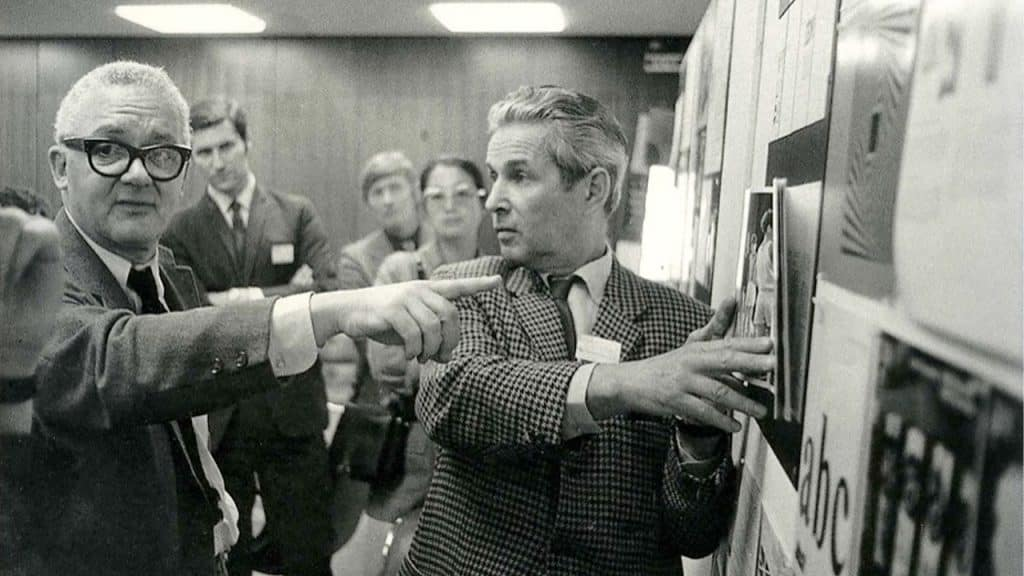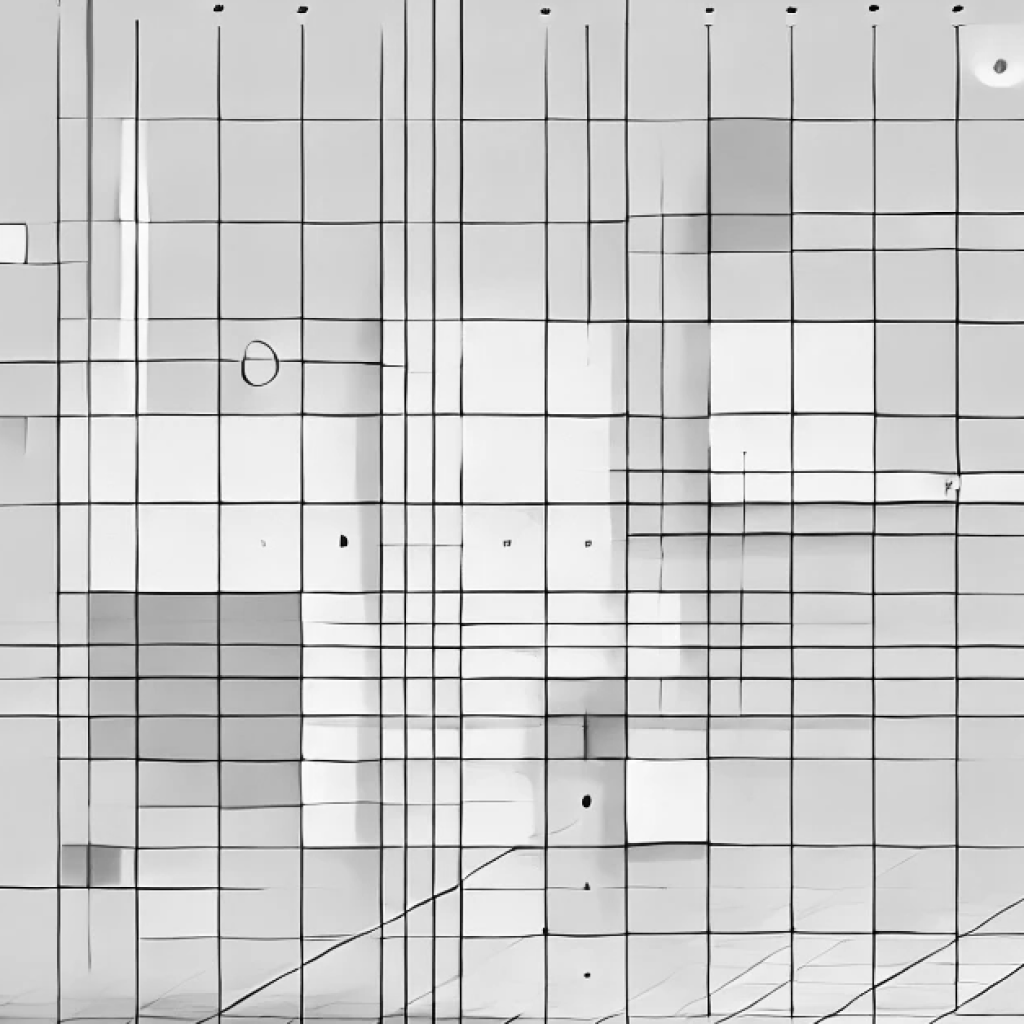Design, at its core, is about creating order out of chaos. It’s about transforming the overwhelming into the understandable, the complex into the approachable. Nowhere is this ethos better embodied than in the Swiss Grid system, a design methodology so influential that its fingerprints can be found on everything from corporate logos to subway maps. The Swiss Grid wasn’t just a framework; it was a revolution that redefined how we think about structure, clarity, and communication in visual design.
To understand the significance of the Swiss Grid, we need to start in the mid-20th century. Post-war Europe was rebuilding not only its infrastructure but also its cultural identity. Amid this, designers in Switzerland sought to develop a visual language that would transcend borders and languages—a universal approach to design that could communicate clearly and effectively.

Paul Rand (left) and Brockmann (right) during a work session at IBM in the 1960s.
Key figures in this movement included Josef Müller-Brockmann, who championed the use of grids for achieving clarity and order; Max Bill, who brought a philosophical rigour to the style; Armin Hofmann, known for his stark and balanced compositions; and Emil Ruder, whose work on typography laid the foundation for much of the style’s success. These pioneers collectively shaped what would become the International Typographic Style, blending precision, functionality, and aesthetic harmony.
The result was the Swiss Grid, also known as the International Typographic Style. At its heart, the Swiss Grid was about precision and logic. It relied on mathematical grids to create visual harmony, ensuring that every element had its place. This wasn’t just an aesthetic choice; it was a philosophical one. The designers of the Swiss Grid believed in stripping away unnecessary decoration, focusing instead on function and clarity.
The grid system is an aid, not a guarantee. It permits a number of possible uses and each designer can look for a solution appropiate to his personal style. But one must learn how to use the grid; it is an art that requires practice.”
Josef Müller-Brockmann
One of the hallmarks of this approach was the use of sans-serif typefaces, particularly Helvetica. Clean, neutral, and timeless, Helvetica became a cornerstone of the movement, embodying the Swiss Grid’s emphasis on legibility and neutrality. The typeface worked in tandem with the grid to create designs that were not only beautiful but also deeply practical.
The beauty of the Swiss Grid lay in its flexibility. While it provided a rigid framework, it also offered endless possibilities for creativity within its constraints. Designers could play with scale, proportion, and alignment, all while adhering to the underlying grid structure. This balance between structure and freedom made the Swiss Grid adaptable to a wide range of applications, from print layouts to branding systems.

Emil Ruder
As the Swiss Grid gained prominence, it began to influence design practices far beyond Switzerland. In the 1960s and 1970s, it became the go-to approach for corporate design, particularly in the United States. Companies like IBM and Lufthansa adopted the principles of the Swiss Grid to create consistent, professional identities. The grid’s ability to bring order and clarity to complex systems made it an ideal fit for the emerging field of information design.

Max Bill in Montagnola, 1974
Even today, the legacy of the Swiss Grid is alive and well. Its principles underpin much of modern web design, where grids are used to create responsive layouts that adapt seamlessly across devices. The Swiss Grid’s emphasis on structure and clarity has also influenced digital interfaces, ensuring that users can navigate systems with ease.

Armin Hofmann
But perhaps the most remarkable thing about the Swiss Grid is its ability to endure. In an era of constant change, its principles remain as relevant as ever. The grid reminds us that good design isn’t about following trends; it’s about solving problems and communicating effectively. It’s a testament to the power of simplicity and structure in a world that often feels anything but simple.
The Swiss Grid isn’t just a relic of design history; it’s a tool that continues to shape the way we see and interact with the world. It’s a reminder that sometimes, the best ideas are the simplest ones—a few lines, a bit of order, and suddenly, the chaos makes sense.
Resources
“Grid Systems in Graphic Design” by Josef Müller-Brockmann The definitive guide to the Swiss Grid, written by one of its pioneers. This book explores the principles and applications of grid-based design.
“The Visual History of Type” by Paul McNeil A comprehensive exploration of typography, including the role of Helvetica and other typefaces central to the Swiss Grid movement.
“Modern Typography: An Essay in Critical History” by Robin Kinross A deep dive into the evolution of typography, with insights into how the Swiss Grid influenced modern design practices.
“Thinking with Type” by Ellen Lupton A practical and philosophical guide to typography, touching on grid systems and their role in creating effective visual communication.
“The Vignelli Canon” by Massimo Vignelli A look at the design philosophy of Massimo Vignelli, a designer heavily influenced by the Swiss Grid, offering timeless principles for structure and clarity.

0 Comments